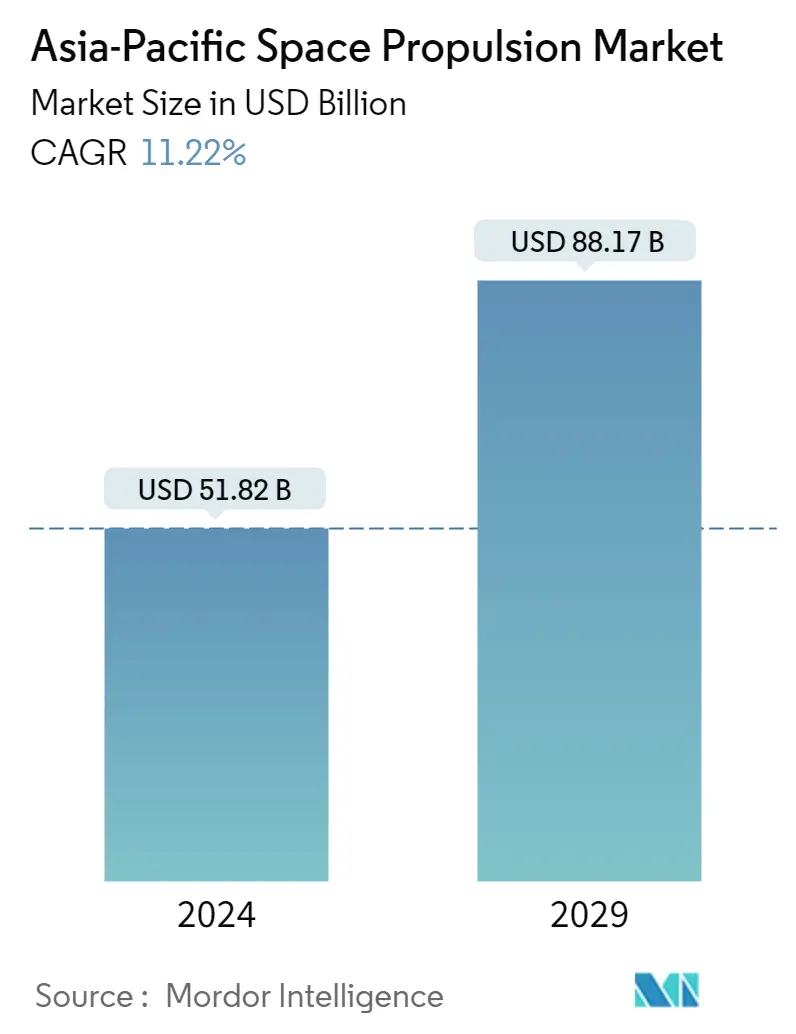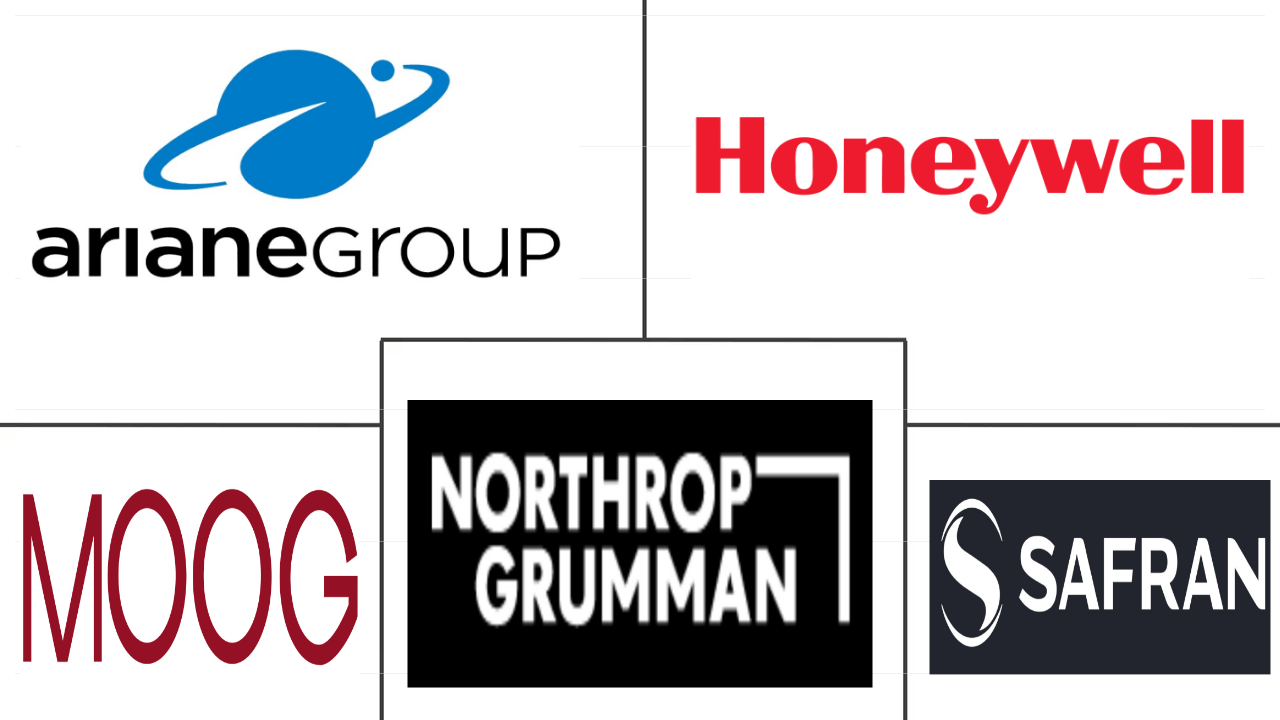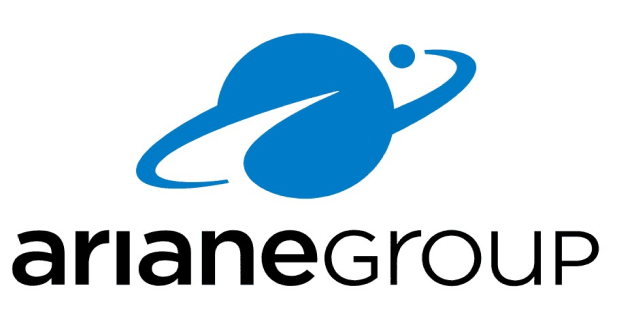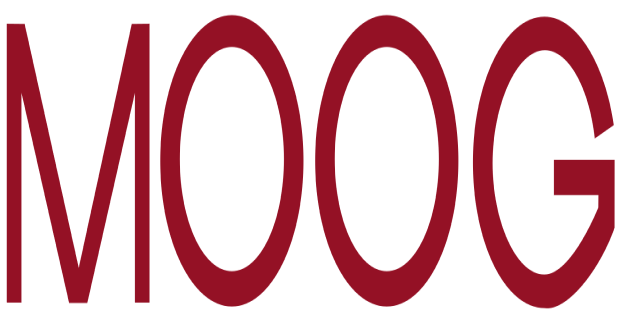Asia-Pacific Space Propulsion Market Size

|
|
Study Period | 2017 - 2029 |
|
|
Market Size (2024) | USD 51.82 Billion |
|
|
Market Size (2029) | USD 88.17 Billion |
|
|
Largest Share by Propulsion Tech | Liquid Fuel |
|
|
CAGR (2024 - 2029) | 11.22 % |
|
|
Largest Share by Country | China |
Major Players |
||

|
||
|
*Disclaimer: Major Players sorted in no particular order |
Asia-Pacific Space Propulsion Market Analysis
The Asia-Pacific Space Propulsion Market size is estimated at USD 51.82 billion in 2024, and is expected to reach USD 88.17 billion by 2029, growing at a CAGR of 11.22% during the forecast period (2024-2029).
51.82 Billion
Market Size in 2024 (USD)
88.17 Billion
Market Size in 2029 (USD)
11.21 %
CAGR (2017-2023)
11.22 %
CAGR (2024-2029)
Largest Market by Propulsion Tech
73.93 %
value share, Liquid Fuel, 2022
Because of its high efficiency, controllability, reliability, and long lifespan, liquid fuel-based propulsion technology is becoming an ideal choice for space missions. It can be used in various orbit classes for satellites.
Fastest-Growing Market by Propulsion Tech
15.74 %
Projected CAGR, Gas based, 2023-2029
In this region, the adoption of gas based propulsion systems registers a considerable growth rate because of it's cost-effectiveness and reliability. These propulsion systems are also easy for orbital maintenance, maneuvering and attitude control.
Largest Market by Country
91.42 %
value share, China, 2022
The demand for satellite manufacturing is driven by the Chinese government's investment towards satellite systems utilised for communication, broadcasting, navigation, weather forecasting, disaster monitoring, and resource surveying, among other areas.
Leading Market Player
9.97 %
market share, Ariane Group, 2022

Ariane Group is the second-largest player in the market. The company has been selected by the European Commission to develop Europe's first reusable and eco-friendly launchers to run two major projects.
Second Leading Market Player
5.11 %
market share, Moog Inc., 2022

Moog Inc. is the third-largest player in the market. The company has focused on innovation and is currently working on a water-powered satellite propulsion system.
The utilization of electric propulsion is expected to surge during the forecast period
- A satellite's propulsion system is commonly used to propel a spacecraft and coordinate its position into orbit. Gas-based propulsion systems, such as cold gas thrusters and green propellants, have applications in the Asia-Pacific satellite market. Cold gas thrusters use compressed gas, typically nitrogen, as a propellant. While relatively simple and reliable, these systems provide low thrust and are mainly used for attitude control and minor orbit adjustments. Countries like Japan and India are actively researching and developing green propellant technologies for satellite propulsion to enhance operational efficiency and reduce the risks associated with toxic propellants.
- On the other hand, electric propulsion is commonly used to hold stations for commercial communication satellites. It is the primary propulsion of some space science missions due to its high specific impulses. Thales, IHI Corporation, and Ariane Group are some of the significant providers of propulsion systems in the region. The new launch of satellites in the region is expected to accelerate market growth over the forecast period.
- Liquid propulsion systems continue to be widely used in the Asia-Pacific for primary propulsion and larger orbit maneuvers. These systems typically employ liquid rocket engines that use liquid propellants such as liquid oxygen and liquid hydrogen. Liquid propulsion offers high thrust capabilities, enabling rapid orbital insertion and major trajectory changes. Between 2023 and 2029, the market is expected to surge by 96% during the forecast period. Gas-based propulsion systems are expected to dominate the market.
Increasing investments in space startups
- A satellite's propulsion system is commonly used to propel a spacecraft into orbit and coordinate the position of the spacecraft in orbit. Gas propellants can also be used but are not common due to their low density and difficulty in applying conventional pumping methods. Liquids are desirable because they have a fairly high density and high specific impulse.
- The propulsion systems that enabled movements have been proven very efficient and reliable. These include hydrazine systems, other single or twin propulsion systems, hybrid systems, and cold/hot air systems, and these systems are used when strong thrust or rapid maneuvering is required. Therefore, chemical systems continue to be the space propulsion technology of choice when their total impulse capacity is sufficient to meet the mission requirements. In May 2021, Bellatrix Aerospace announced that it tested the country’s first privately built Hall Thruster, an electric propulsion system for satellites.
- The application of electric propulsion is commonly used to hold stations for commercial communication satellites and is the main propulsion of some space science missions due to its high specific impulses. The new launch of satellites in the region is expected to accelerate market growth during the forecast period.
Asia-Pacific Space Propulsion Market Trends
Increased spending by China, India, Japan, and South Korea are the growth drivers
- The demand for satellite propulsion systems is driven by increased spending on satellite programs by various countries, such as the manufacture and launch of national satellite internet constellation of up to 13,000 satellites. China's SatNet has been engaging with commercial companies as it develops a blueprint for constructing the "Guowang" constellation. Notably, these and other small satellites require onboard propulsion to reduce the chances of collision and mitigate the issue of debris in low Earth orbit. Several companies in the region are developing space propulsion technologies. In May 2022, a Chinese satellite electric propulsion company named Kongtian Dongli announced that it secured a multi-million yuan angel round financing amid a proliferation of Chinese satellite constellation plans. The company's main products are Hall thrusters and microwave electric propulsion systems, with an on-orbit test of the latter planned before December this year.
- Likewise, in February 2023, the Indian government announced that ISRO is expected to receive USD 2 billion for various space-related activities, including the development of the Liquid Propulsion Systems Centre (LPSC) and the ISRO Propulsion Complex. In March 2021, Japan announced spending USD 4.14 billion on space-related activities. The country mentioned having allocated JPY 18.9 billion for the H3 rocket development. In January 2020, JAXA mentioned that JPY 3.6 billion was allocated to fund the research and development of core engine technologies that significantly improve fuel consumption and reduce environmental burden, as well as the research and development of the silent supersonic aeroplane and emission-free aircraft (electric-powered propulsion systems).
Asia-Pacific Space Propulsion Industry Overview
The Asia-Pacific Space Propulsion Market is fragmented, with the top five companies occupying 15.08%. The major players in this market are Ariane Group, Honeywell International Inc., Moog Inc., Northrop Grumman Corporation and Safran SA (sorted alphabetically).
Asia-Pacific Space Propulsion Market Leaders
Ariane Group
Honeywell International Inc.
Moog Inc.
Northrop Grumman Corporation
Safran SA
Other important companies include Sitael S.p.A., Space Exploration Technologies Corp., Thales.
*Disclaimer: Major Players sorted in alphabetical order.
Asia-Pacific Space Propulsion Market News
- February 2023: Thales Alenia Space has contracted with the Korea Aerospace Research Institute (KARI) to provide the integrated electric propulsion on their GEO-KOMPSAT-3 (GK3) satellite.
- December 2022: GKN Aerospace contracted with ArianeGroup to supply the next stage of the Ariane 6 turbine and Vulcain nozzle. The contract covers the manufacturing and supply of units for 14 Ariane 6 launchers, which are expected to go into production by 2025. GKN Aerospace is currently focused on industrializing and integrating novel and innovative technologies into the Ariane 6 product.
- November 2022: Two Northrop Grumman Corporation five-stage solid rocket boosters helped launch the first flight of NASA's Space Launch System "SLS"; as part of the Artemis I mission. This is the first in a series of Artemis missions focused on deep space exploration.
Free with this Report
We offer a comprehensive set of global and local metrics that illustrate the fundamentals of the satellites industry. Clients can access in-depth market analysis of various satellites and launch vehicles through granular level segmental information supported by a repository of market data, trends, and expert analysis. Data and analysis on satellite launches, satellite mass, application of satellites, spending on space programs, propulsion systems, end users, etc., are available in the form of comprehensive reports as well as excel based data worksheets.
Asia-Pacific Space Propulsion Market Report - Table of Contents
1. EXECUTIVE SUMMARY & KEY FINDINGS
2. REPORT OFFERS
3. INTRODUCTION
- 3.1 Study Assumptions & Market Definition
- 3.2 Scope of the Study
- 3.3 Research Methodology
4. KEY INDUSTRY TRENDS
- 4.1 Spending On Space Programs
-
4.2 Regulatory Framework
- 4.2.1 Australia
- 4.2.2 Japan
- 4.2.3 Singapore
- 4.3 Value Chain & Distribution Channel Analysis
5. MARKET SEGMENTATION (includes market size in Value in USD, Forecasts up to 2029 and analysis of growth prospects)
-
5.1 Propulsion Tech
- 5.1.1 Electric
- 5.1.2 Gas based
- 5.1.3 Liquid Fuel
-
5.2 Country
- 5.2.1 Australia
- 5.2.2 China
- 5.2.3 India
- 5.2.4 Japan
- 5.2.5 New Zealand
- 5.2.6 Singapore
- 5.2.7 South Korea
6. COMPETITIVE LANDSCAPE
- 6.1 Key Strategic Moves
- 6.2 Market Share Analysis
- 6.3 Company Landscape
-
6.4 Company Profiles (includes Global Level Overview, Market Level Overview, Core Business Segments, Financials, Headcount, Key Information, Market Rank, Market Share, Products and Services, and Analysis of Recent Developments).
- 6.4.1 Ariane Group
- 6.4.2 Honeywell International Inc.
- 6.4.3 Moog Inc.
- 6.4.4 Northrop Grumman Corporation
- 6.4.5 Safran SA
- 6.4.6 Sitael S.p.A.
- 6.4.7 Space Exploration Technologies Corp.
- 6.4.8 Thales
7. KEY STRATEGIC QUESTIONS FOR SATELLITE CEOS
8. APPENDIX
-
8.1 Global Overview
- 8.1.1 Overview
- 8.1.2 Porter's Five Forces Framework
- 8.1.3 Global Value Chain Analysis
- 8.1.4 Market Dynamics (DROs)
- 8.2 Sources & References
- 8.3 List of Tables & Figures
- 8.4 Primary Insights
- 8.5 Data Pack
- 8.6 Glossary of Terms
List of Tables & Figures
- Figure 1:
- SPENDING ON SPACE PROGRAMS BY REGION, USD, ASIA-PACIFIC, 2017 - 2022
- Figure 2:
- ASIA-PACIFIC SPACE PROPULSION MARKET, VALUE, USD, 2017 - 2029
- Figure 3:
- VALUE OF SPACE PROPULSION MARKET BY PROPULSION TECH, USD, ASIA-PACIFIC, 2017 - 2029
- Figure 4:
- VALUE SHARE OF SPACE PROPULSION MARKET BY PROPULSION TECH, %, ASIA-PACIFIC, 2017 VS 2023 VS 2029
- Figure 5:
- VALUE OF ELECTRIC MARKET, USD, ASIA-PACIFIC, 2017 - 2029
- Figure 6:
- VALUE OF GAS BASED MARKET, USD, ASIA-PACIFIC, 2017 - 2029
- Figure 7:
- VALUE OF LIQUID FUEL MARKET, USD, ASIA-PACIFIC, 2017 - 2029
- Figure 8:
- VALUE OF SPACE PROPULSION MARKET BY COUNTRY, USD, ASIA-PACIFIC, 2017 - 2029
- Figure 9:
- VALUE SHARE OF SPACE PROPULSION MARKET BY COUNTRY, %, ASIA-PACIFIC, 2017 VS 2023 VS 2029
- Figure 10:
- VALUE OF SPACE PROPULSION MARKET, USD, AUSTRALIA, 2017 - 2029
- Figure 11:
- VALUE OF SPACE PROPULSION MARKET, USD, CHINA, 2017 - 2029
- Figure 12:
- VALUE OF SPACE PROPULSION MARKET, USD, INDIA, 2017 - 2029
- Figure 13:
- VALUE OF SPACE PROPULSION MARKET, USD, JAPAN, 2017 - 2029
- Figure 14:
- VALUE OF SPACE PROPULSION MARKET, USD, NEW ZEALAND, 2017 - 2029
- Figure 15:
- VALUE OF SPACE PROPULSION MARKET, USD, SINGAPORE, 2017 - 2029
- Figure 16:
- VALUE OF SPACE PROPULSION MARKET, USD, SOUTH KOREA, 2017 - 2029
- Figure 17:
- NUMBER OF STRATEGIC MOVES OF MOST ACTIVE COMPANIES, ASIA-PACIFIC SPACE PROPULSION MARKET, ASIA-PACIFIC, 2017 - 2029
- Figure 18:
- TOTAL NUMBER OF STRATEGIC MOVES OF COMPANIES, ASIA-PACIFIC SPACE PROPULSION MARKET, ASIA-PACIFIC, 2017 - 2029
- Figure 19:
- MARKET SHARE OF ASIA-PACIFIC SPACE PROPULSION MARKET, %, ASIA-PACIFIC, 2022
Asia-Pacific Space Propulsion Industry Segmentation
Electric, Gas based, Liquid Fuel are covered as segments by Propulsion Tech. Australia, China, India, Japan, New Zealand, Singapore, South Korea are covered as segments by Country.
- A satellite's propulsion system is commonly used to propel a spacecraft and coordinate its position into orbit. Gas-based propulsion systems, such as cold gas thrusters and green propellants, have applications in the Asia-Pacific satellite market. Cold gas thrusters use compressed gas, typically nitrogen, as a propellant. While relatively simple and reliable, these systems provide low thrust and are mainly used for attitude control and minor orbit adjustments. Countries like Japan and India are actively researching and developing green propellant technologies for satellite propulsion to enhance operational efficiency and reduce the risks associated with toxic propellants.
- On the other hand, electric propulsion is commonly used to hold stations for commercial communication satellites. It is the primary propulsion of some space science missions due to its high specific impulses. Thales, IHI Corporation, and Ariane Group are some of the significant providers of propulsion systems in the region. The new launch of satellites in the region is expected to accelerate market growth over the forecast period.
- Liquid propulsion systems continue to be widely used in the Asia-Pacific for primary propulsion and larger orbit maneuvers. These systems typically employ liquid rocket engines that use liquid propellants such as liquid oxygen and liquid hydrogen. Liquid propulsion offers high thrust capabilities, enabling rapid orbital insertion and major trajectory changes. Between 2023 and 2029, the market is expected to surge by 96% during the forecast period. Gas-based propulsion systems are expected to dominate the market.
| Propulsion Tech | Electric |
| Gas based | |
| Liquid Fuel | |
| Country | Australia |
| China | |
| India | |
| Japan | |
| New Zealand | |
| Singapore | |
| South Korea |
Market Definition
- Application - Various applications or purposes of the satellites are classified into communication, earth observation, space observation, navigation, and others. The purposes listed are those self-reported by the satellite’s operator.
- End User - The primary users or end users of the satellite is described as civil (academic, amateur), commercial, government (meteorological, scientific, etc.), military. Satellites can be multi-use, for both commercial and military applications.
- Launch Vehicle MTOW - The launch vehicle MTOW (maximum take-off weight) means the maximum weight of the launch vehicle during take-off, including the weight of payload, equipment and fuel.
- Orbit Class - The satellite orbits are divided into three broad classes namely GEO, LEO, and MEO. Satellites in elliptical orbits have apogees and perigees that differ significantly from each other and categorized satellite orbits with eccentricity 0.14 and higher as elliptical.
- Propulsion tech - Under this segment, different types of satellite propulsion systems have been classified as electric, liquid-fuel and gas-based propulsion systems.
- Satellite Mass - Under this segment, different types of satellite propulsion systems have been classified as electric, liquid-fuel and gas-based propulsion systems.
- Satellite Subsystem - All the components and subsystems which includes propellants, buses, solar panels, other hardware of satellites are included under this segment.
| Keyword | Definition |
|---|---|
| Attitude Control | The orientation of the satellite relative to the Earth and the sun. |
| INTELSAT | The International Telecommunications Satellite Organization operates a network of satellites for international transmission. |
| Geostationary Earth Orbit (GEO) | Geostationary satellites in Earth orbit 35,786 km (22,282 mi) above the equator in the same direction and at the same speed as the earth rotates on its axis, making them appear fixed in the sky. |
| Low Earth Orbit (LEO) | Low Earth Orbit satellites orbit from 160-2000km above the earth, take approximately 1.5 hours for a full orbit and only cover a portion of the earth’s surface. |
| Medium Earth Orbit (MEO) | MEO satellites are located above LEO and below GEO satellites and typically travel in an elliptical orbit over the North and South Pole or in an equatorial orbit. |
| Very Small Aperture Terminal (VSAT) | Very Small Aperture Terminal is an antenna that is typically less than 3 meters in diameter |
| CubeSat | CubeSat is a class of miniature satellites based on a form factor consisting of 10 cm cubes. CubeSats weigh no more than 2 kg per unit and typically use commercially available components for their construction and electronics. |
| Small Satellite Launch Vehicles (SSLVs) | Small Satellite Launch Vehicle (SSLV) is a three-stage Launch Vehicle configured with three Solid Propulsion Stages and a liquid propulsion-based Velocity Trimming Module (VTM) as a terminal stage |
| Space Mining | Asteroid mining is the hypothesis of extracting material from asteroids and other asteroids, including near-Earth objects. |
| Nano Satellites | Nanosatellites are loosely defined as any satellite weighing less than 10 kilograms. |
| Automatic Identification System (AIS) | Automatic identification system (AIS) is an automatic tracking system used to identify and locate ships by exchanging electronic data with other nearby ships, AIS base stations, and satellites. Satellite AIS (S-AIS) is the term used to describe when a satellite is used to detect AIS signatures. |
| Reusable launch vehicles (RLVs) | Reusable launch vehicle (RLV) means a launch vehicle that is designed to return to Earth substantially intact and therefore may be launched more than one time or that contains vehicle stages that may be recovered by a launch operator for future use in the operation of a substantially similar launch vehicle. |
| Apogee | The point in an elliptical satellite orbit which is farthest from the surface of the earth. Geosynchronous satellites which maintain circular orbits around the earth are first launched into highly elliptical orbits with apogees of 22,237 miles. |
Research Methodology
Mordor Intelligence follows a four-step methodology in all our reports.
- Step-1: Identify Key Variables: In order to build a robust forecasting methodology, the variables and factors identified in Step-1 are tested against available historical market numbers. Through an iterative process, the variables required for market forecast are set and the model is built on the basis of these variables.
- Step-2: Build a Market Model: Market-size estimations for the historical and forecast years have been provided in revenue and volume terms. For sales conversion to volume, the average selling price (ASP) is kept constant throughout the forecast period for each country, and inflation is not a part of the pricing.
- Step-3: Validate and Finalize: In this important step, all market numbers, variables and analyst calls are validated through an extensive network of primary research experts from the market studied. The respondents are selected across levels and functions to generate a holistic picture of the market studied.
- Step-4: Research Outputs: Syndicated Reports, Custom Consulting Assignments, Databases & Subscription Platforms.








